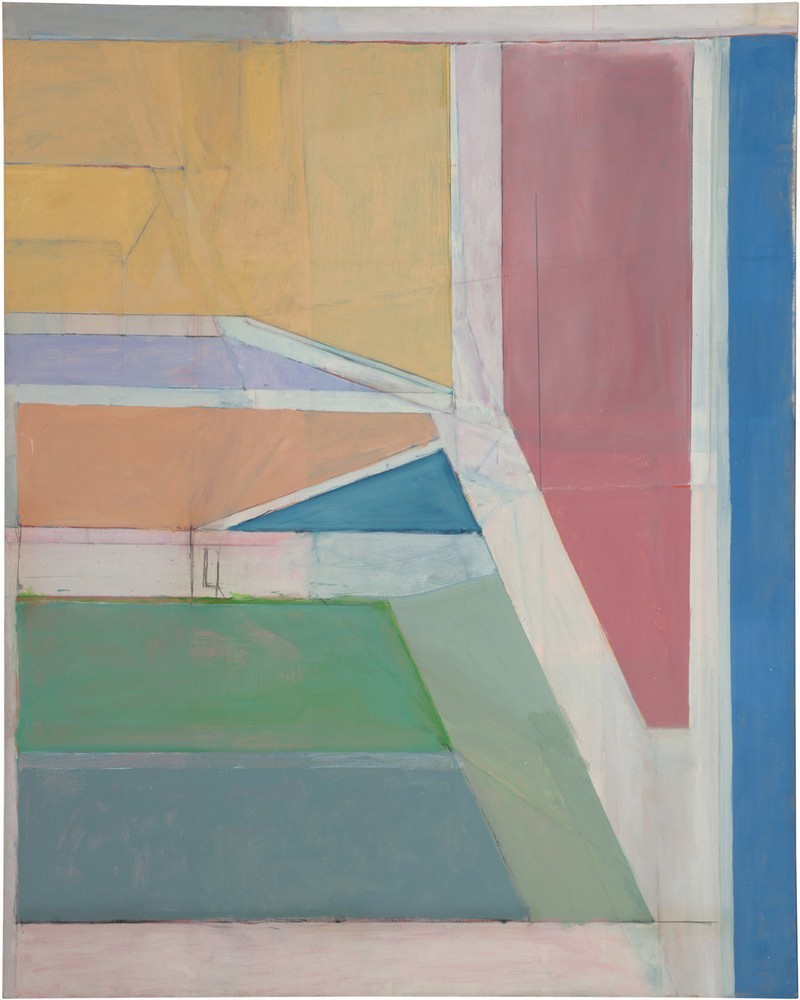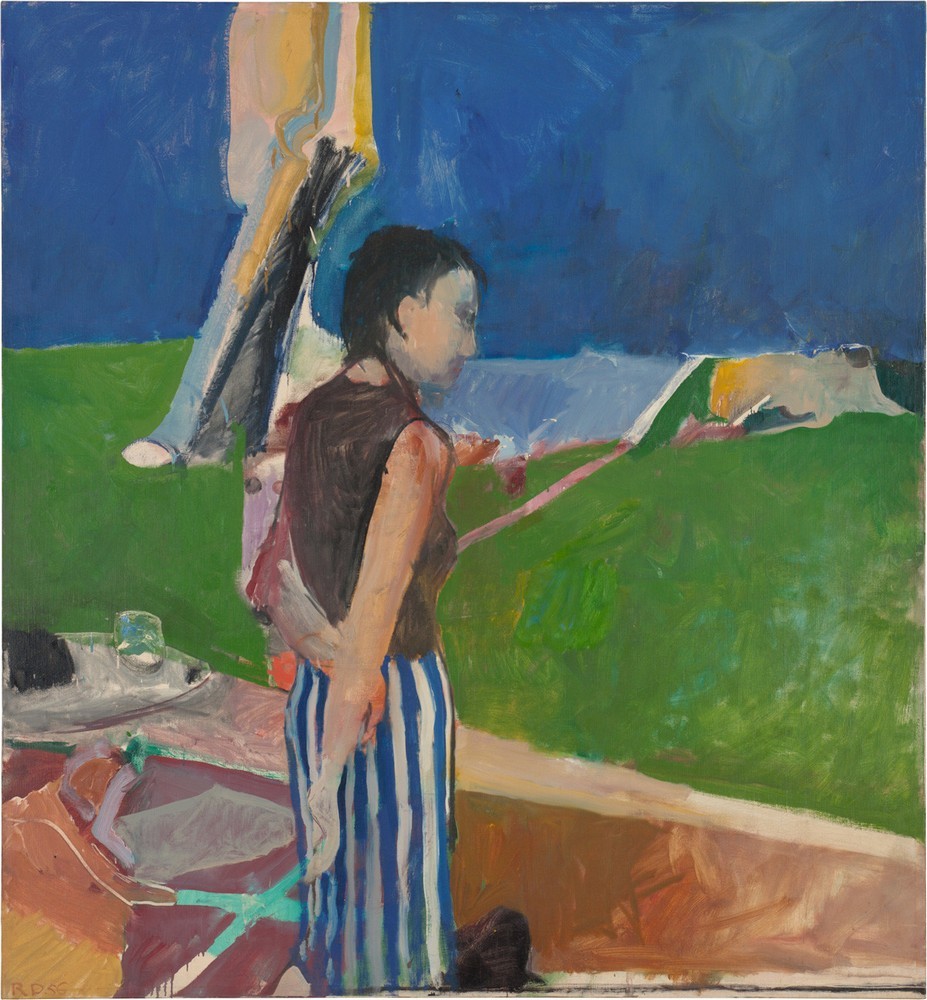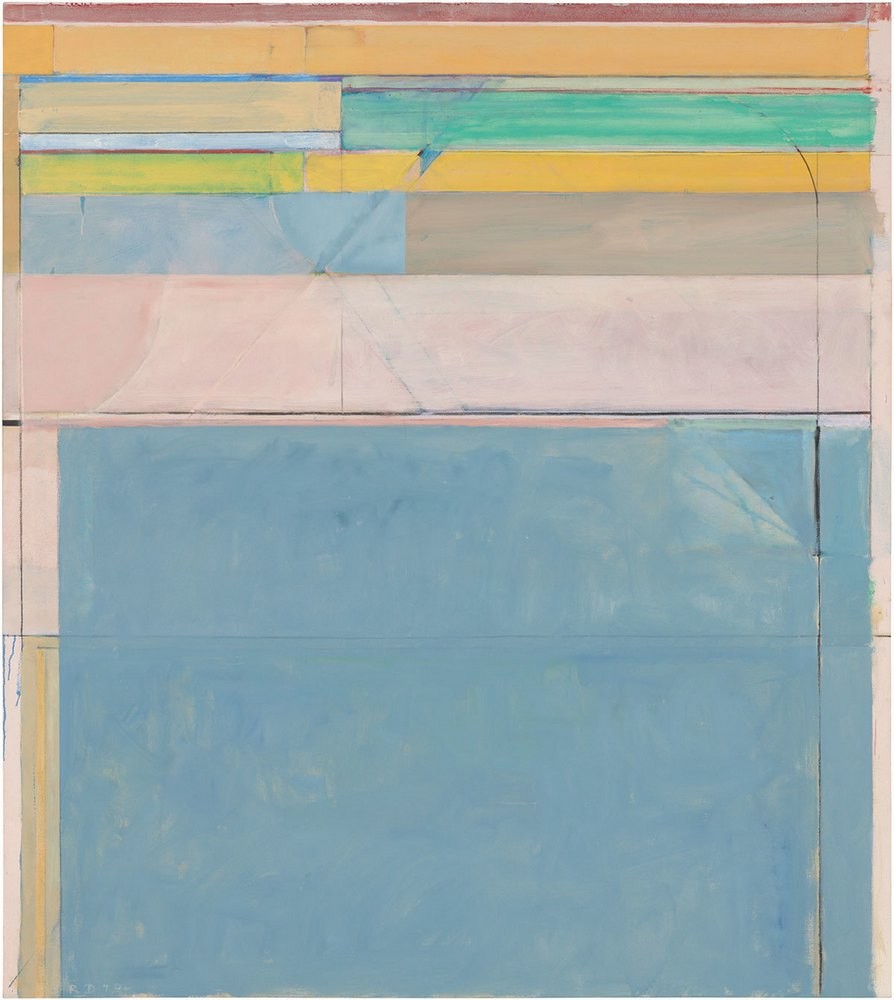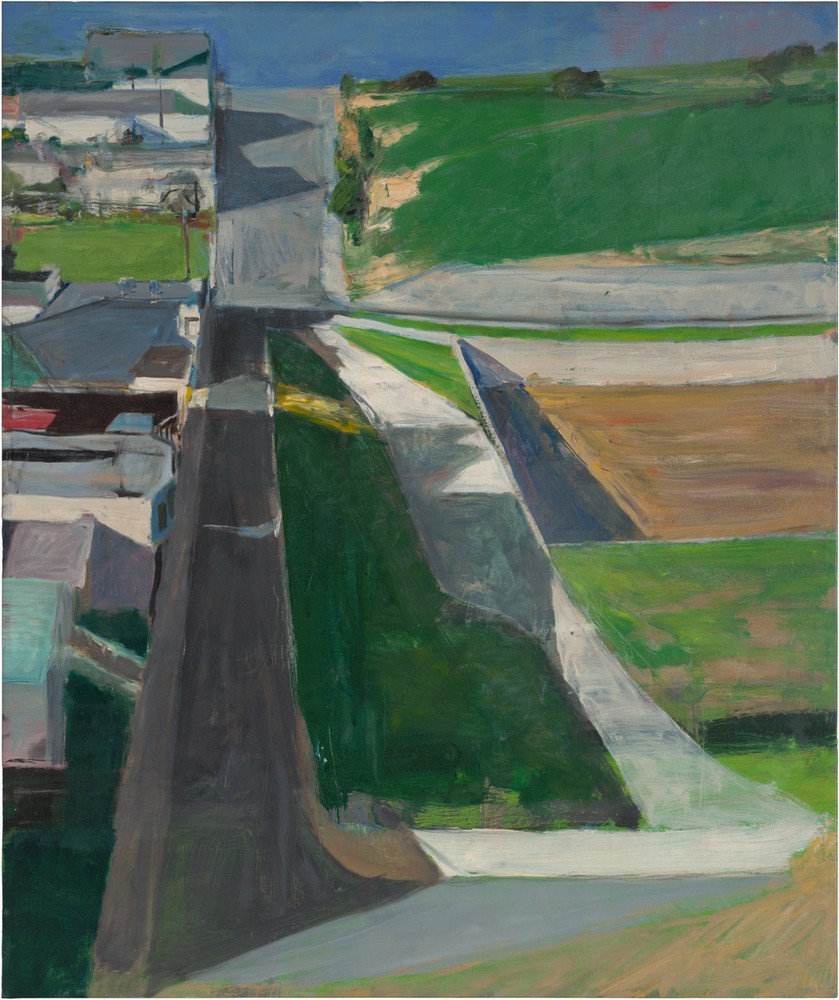Richard Diebenkorn
14 Mar - 07 Jun 2015

Richard Diebenkorn
Ocean Park #27, 1970.
Oil on canvas. 254 x 203.2 cm. Brooklyn Museum. Gift of The Roebling Society and Mr. and Mrs. Charles H. Blatt and Mr. and Mrs. William K. Jacobs, Jr., 72.4. © 2014 The Richard Diebenkorn Foundation.
Ocean Park #27, 1970.
Oil on canvas. 254 x 203.2 cm. Brooklyn Museum. Gift of The Roebling Society and Mr. and Mrs. Charles H. Blatt and Mr. and Mrs. William K. Jacobs, Jr., 72.4. © 2014 The Richard Diebenkorn Foundation.

Richard Diebenkorn
Girl On a Terrace, 1956.
Oil on canvas. 179.1 x 166.1 cm. Collection Neuberger Museum of Art, Purchase College, State of University of New York. Gift of Roy R. Neuberger, 1975.16.09. © 2014 The Richard Diebenkorn Foundation.
Girl On a Terrace, 1956.
Oil on canvas. 179.1 x 166.1 cm. Collection Neuberger Museum of Art, Purchase College, State of University of New York. Gift of Roy R. Neuberger, 1975.16.09. © 2014 The Richard Diebenkorn Foundation.

Richard Diebenkorn
Ocean Park #116, 1979.
Fine Arts Museums of San Francisco. Museum purchase, gift of Mrs Paul L. Watts / © 2015 The Richard Diebenkorn Foundation
Ocean Park #116, 1979.
Fine Arts Museums of San Francisco. Museum purchase, gift of Mrs Paul L. Watts / © 2015 The Richard Diebenkorn Foundation

Richard Diebenkorn
Cityscape #1, 1963.
Oil on canvas. 153 x 128.3. San Francisco Museum of Modern Art. Purchased with funds from Trustees and friends in memory of Hector Escobosa, Brayton Wilbur, and J.D. Zellerbach. © 2014 The Richard Diebenkorn Foundation.
Cityscape #1, 1963.
Oil on canvas. 153 x 128.3. San Francisco Museum of Modern Art. Purchased with funds from Trustees and friends in memory of Hector Escobosa, Brayton Wilbur, and J.D. Zellerbach. © 2014 The Richard Diebenkorn Foundation.
RICHARD DIEBENKORN
14 March — 7 June 2015
Revered as one of the great post-war masters in his native United States, Richard Diebenkorn is an artist whose staunchly independent career takes us from abstraction to figuration and back again.
We are thrilled to be bringing the work of a man described by the Washington Post as one of America’s “finest abstract painters” to a UK audience for the first time in more than 20 years. Diebenkorn’s career is broadly divided into three phases and we will be presenting some of the most outstanding works from each period.
We begin in the early 1950s, when Abstract Expressionism was a dominant force on the East Coast. Diebenkorn initially embraced abstraction, before making what was a surprising change of direction to figuration in the mid-1950s, which would persist until the mid 1960s. Then, returning to abstraction in the late 1960s, we look at his famous Ocean Park series, which according to the Boston Globe includes “some of the most beautiful works of art created in America or anywhere else since the Second World War.”
Diebenkorn’s seductive colour palettes and intricately balanced compositions draw from the light and a sense of the places in which he worked, and define a career that spanned more than four decades. It is our privilege to share his creations. As art historian John Elderfield aptly put it: “he renews your belief in painting.”
14 March — 7 June 2015
Revered as one of the great post-war masters in his native United States, Richard Diebenkorn is an artist whose staunchly independent career takes us from abstraction to figuration and back again.
We are thrilled to be bringing the work of a man described by the Washington Post as one of America’s “finest abstract painters” to a UK audience for the first time in more than 20 years. Diebenkorn’s career is broadly divided into three phases and we will be presenting some of the most outstanding works from each period.
We begin in the early 1950s, when Abstract Expressionism was a dominant force on the East Coast. Diebenkorn initially embraced abstraction, before making what was a surprising change of direction to figuration in the mid-1950s, which would persist until the mid 1960s. Then, returning to abstraction in the late 1960s, we look at his famous Ocean Park series, which according to the Boston Globe includes “some of the most beautiful works of art created in America or anywhere else since the Second World War.”
Diebenkorn’s seductive colour palettes and intricately balanced compositions draw from the light and a sense of the places in which he worked, and define a career that spanned more than four decades. It is our privilege to share his creations. As art historian John Elderfield aptly put it: “he renews your belief in painting.”
